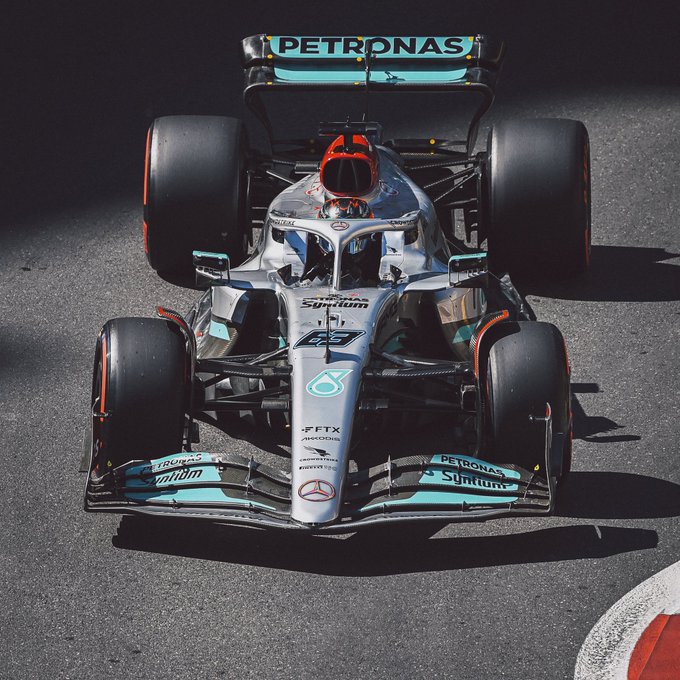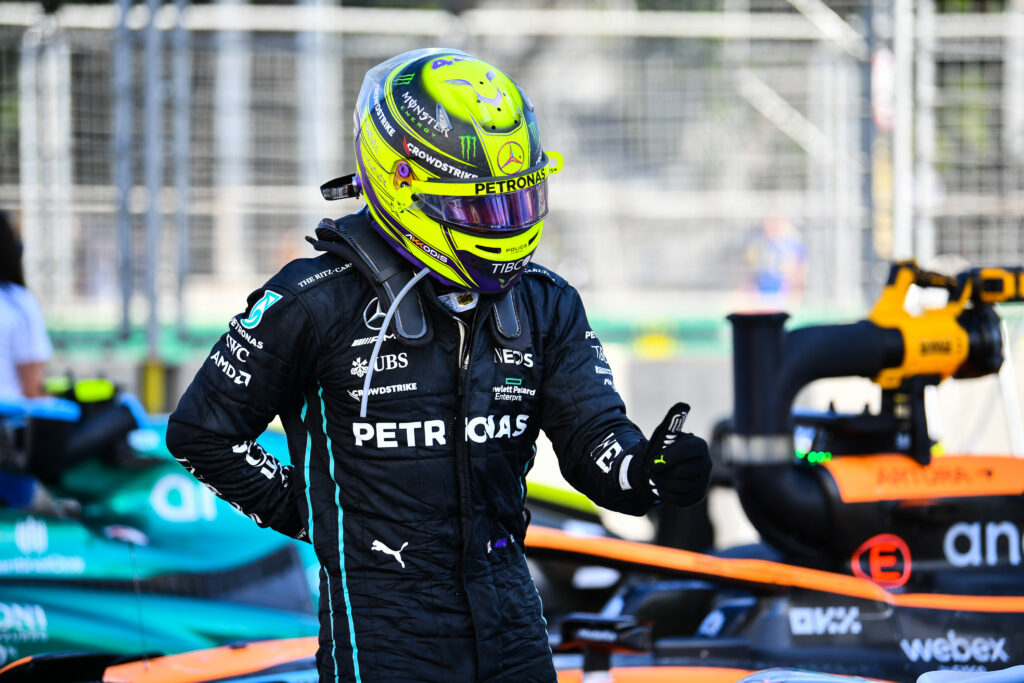George Russell said that Formula One drivers prefer to prioritize car performance over safety and criticized the change in discourse of those who complained about the quiques, citing Max Verstappen and Sergio Pérez

The 2022 Formula One car pitch has been keeping drivers awake at night. After the FIA created a new technical directive aimed at limiting vertical oscillations, it was George Russell's turn to speak out on the subject as someone who suffers directly from the effect known as porpoising - not least because Mercedes is the car most affected by the phenomenon among the ten on the grid. The Briton adopted a critical tone and opined that the drivers who rail against the methods of controlling the ticking are, in fact, only concerned about losing performance.
"Obviously there are a number of different intentions here, with different teams and drivers," Russell said. "We've heard from Carlos [Sainz] at times, 'Czech' [Perez] and Max [Verstappen] throughout the season about how bad it's been. But now that their performance looks strong, they obviously don't want any changes because it could just hurt them. So it's a bit unfortunate to see performance prioritized over safety," he criticized.
During the Azerbaijan GP, which has the longest straight of the calendar - over 2 km long - you could see several drivers complaining about the physical effects of the kicks, such as Lewis Hamilton - who had trouble getting out of his car -, Pierre Gasly, and Carlos Sainz. Russell said that the heavy rocking even prevented him from reading the signs on the pit lane, when the teams indicate some information about the race to the drivers.
▶️ Get to know the GRAND PRIZE channel on Twitch by clicking here!

"In Baku, I could see the pit lane sign but I couldn't read it because it was bouncing so much," he quoted. "I saw a video of Lance [Stroll] on one of the laps, struggling to change the buttons on the steering wheel because you could visibly see how much the car was bucking and how hard it was. We are all competitive animals in this sport and we all want to win. But we can't put our bodies at risk to do that," he said.
Russell also gave his opinion about the new FIA measure, which he still considers an unknown quantity. Far from thinking that the new resolution will solve the problem in Formula 1, the British driver charged the entity for a "bigger conversation" so that a solution can actually be reached on the matter.
"With what was implemented this weekend, I think it's more of a palliative measure than a solution," he opined. "We need to wait and see. I think even for the teams that are suffering less, it's still an incredibly aggressive and bumpy trajectory. And the FIA has access to all the vertical loads that we've suffered and it's a long way from what you expect is going to be safe. So it's really going to take a bigger conversation to move forward from where we are," he pointed out.

Finally, Russell admitted he was unaware of the effects the FIA's new measurement will have on his team's cars. The #63 highlighted the newness of the cars, the first under the new regulations, and cast doubt on whether the entity's new resolution will actually bring a 'remedy' to porpoising.
"From our side, from a performance aspect, any change would be something unknown," Russell admitted. "The FIA makes the rules, and they could bring in any change and nobody here would know whether it would be better for performance or have a negative effect on performance. So we really need to wait and see," he repeated.
"There are so many different aspects and elements in these cars that increasing the car is not necessarily going to reduce or remove [the ticking]," he complained. "You vary between porpoising and bottoming, they are two different things, and obviously the stiffness of the cars is very bad. Time will tell. I hope it will be easy for everyone to drive and not have an effect of diminishing anyone's performance," he finished.